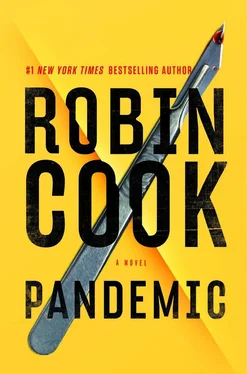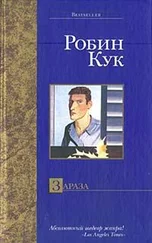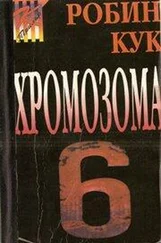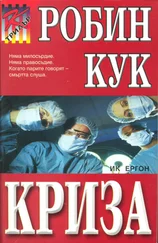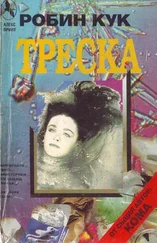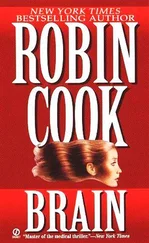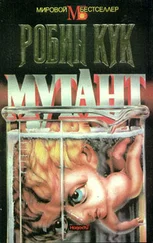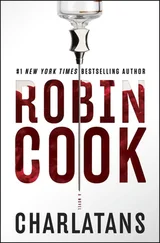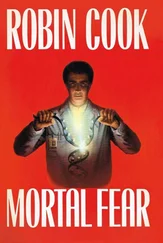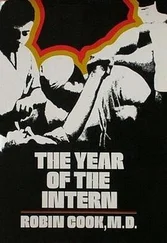“Do you mind if I take this?” Jack asked, gesturing with his mobile phone in his hand.
“Be my guest,” Lou said graciously. “You’re working. I’m just a freeloader.”
Guessing it probably related to an MLI question and therefore might be a harbinger of an interesting case, Jack was eager. “Maybe this is what the doctor ordered,” he said.
MONDAY, 11:45 A.M.
“I’m up on the second floor in the formal dining room, Dr. Hernandez,” Jack said into the phone. “I’m here with a group of visiting nuns. Come on up!” He was using the speakerphone while he adjusted the ringtone to a more normal setting.
Lou chuckled. That kind of impious exaggeration sounded more like the irreverent Jack Stapleton he knew and loved. Maybe Jack wasn’t as bad off as he’d been suggesting.
A minute later a youthful-looking woman approached who reminded Lou of Laurie, with the care she obviously expended on her general appearance. She was wearing a fresh, highly starched white doctor’s coat, which was the opposite of the rumpled and soiled ones the veteran MEs generally wore. Beneath it was a bright red dress that, in Lou’s estimation, wouldn’t have been out of place at a cocktail party. Her features, coloring, and tightly gathered hair suggested a Hispanic genealogy.
Jack performed the introductions, describing Lou as a dear old friend of both his and Laurie’s. Then Jack explained that Jennifer was the granddaughter of the woman who’d been Laurie’s nanny from when Laurie was pint-size all the way up to her teenage years.
“Jennifer even came to the OCME under Laurie’s tutelage and spent a week here as a high school student,” Jack said. “I was told she was quite a pistol back then and needed some direction, which Laurie supplied.”
“I’m afraid I was on the wild side,” Jennifer agreed. “My poor grandmother Maria, who raised me, didn’t know what to do with me and turned to Laurie in desperation. But my coming here ended up being a life-changing experience. It got me so interested in academics and forensics that I went to medical school and did the whole nine yards. And here I am.”
“And there’s even more to the story,” Jack said. “It was because of Jennifer that Laurie and I ended up taking that trip to India about ten years ago. So she has expanded our lives as well.”
“I remember that trip,” Lou said. “It was about medical tourism.”
“That it was,” Jennifer agreed. “Unfortunately for my grandmother.”
“It was a disaster for Maria,” Jack said in agreement. “So, Jennifer. What’s up? How come you’re looking for me?”
“I got a call from Bart Arnold, the MLI supervisor,” Jennifer said. “A problematic case is on its way in to the OCME from the Bellevue emergency room. He’d heard about the call-in and was concerned enough to head over there himself. He called me from the ER to say that he thinks it might be a contagious case, and he specifically asked me to ask if you would get involved. He told me something I didn’t know. You are known around here as the ‘contagion guru.’”
“What the hell does that mean?” Lou asked. He visibly cringed. He was a world-class germaphobe, and anything to do with pestilence gave him the creeps.
“During my first year here at the OCME I made a couple surprisingly accurate diagnostic calls on a number of fatal contagious cases that were being artificially spread.”
“You mean someone was doing it on purpose?” Lou questioned. “Like bioterrorism?”
“You got it,” Jack said. “But we nipped it in the bud. It could have been bad.”
“Bart wants to know if you’ll give him a call,” Jennifer told him.
“Sounds like my kind of case,” Jack said. “I’ll do better than call him. I’ll run down to 421 and see him in person.” 421 was how everyone at the OCME referred to the new high-rise building on 26th Street. The old building that still housed the morgue and the medical examiners was referred to as 520, its First Avenue address.
“Then I’ll let him know you’re coming,” Jennifer said. She nodded to Jack, told Lou it had been a pleasure to meet him, and then left.
“Doctors are getting younger and prettier all the time,” Lou said once she’d gone. “Makes me feel like an old fart. But be that as it may, I’m outta here. Thanks for the morning entertainment, and let me know the final dispensation on the three cases we did ASAP.”
“It goes without saying.” Jack stood. “Come on. I’ll walk you to your car on my way down to 421.”
After closing the door to Lou’s unmarked Chevy Impala, Jack waved him goodbye as the car backed up from the OCME unloading dock and pulled out onto 30th Street. Besides the OCME vans, Lou’s car was the only vehicle permitted to park there, and to ensure it wasn’t towed away, Lou always made certain to leave his laminated NYPD detective card in full view on the dash.
The moment Lou’s car disappeared, Jack returned to 520’s interior to retrieve his bike, which he’d parked near the autopsy room. Even though it was only four blocks south to the 421 high-rise, he couldn’t pass up the opportunity for even a short burst of speed and a bit of fresh air. Unfortunately, it wasn’t really fresh air, since the OCME was situated on the East Side of Manhattan and therefore constantly bathed in the considerable car, truck, and bus fumes carried along on the island’s prevailing westerlies. Hopping on the bike, Jack pedaled east and then south along the edge of Franklin Delano Roosevelt Drive with his not-so-clean doctor’s coat flapping in the wind. Despite the cool temperature, he was wearing only blue scrubs underneath. The trip was over practically before it had started. Jack carried his bike in through the building’s loading bay, parked it next to a security booth, and took the elevators up to the fifth floor.
The fifth floor was the busiest in the entire building. Not only did it house the medical-legal investigative team, but Communications as well, where all calls came in to the OCME day and night. It was also the arrival area, where all specimens came into the building for analysis from the autopsy room and from off campus. That included everything from run-of-the-mill histology, bones, and teeth to the most sophisticated DNA tests. The only samples that didn’t come into the fifth floor of 421 were toxicology specimens, since Toxicology was the only major department of the OCME besides the morgue itself that had yet to move from the 520 building.
The MLI Department occupied the area immediately beyond the glass doors defining the elevator lobby. It was an open office, comprising rows of desks with their backs pushed up against one another. Bart Arnold’s desk was in a central location, so he had a bird’s-eye view of his team.
Bart had been with the OCME since way before Jack’s arrival, back when the department had been a shadow of its current self, with a mere handful of employees. In those days the investigators were called physician assistants and sat in tiny individual shoulder-height cubicles behind the telephone operators’ switchboard. Now the department was large enough to field its own softball team at the spring picnic.
Bart himself was a heavyset man with just a handful of curly grayish hair that extended from just a little over each ear in a ring around the back of his head. He was an intelligent, quick-witted individual with a remarkably calm personality. He needed his patience. His team was quite variegated in temperament, age, and gender, and the MLI role had to be maintained 24/7, holidays notwithstanding. Like Jack, he was wearing a white coat a little worse for wear over scrubs. As a hands-on supervisor, Bart was known to make frequent trips out of the office to investigate troublesome deaths, particularly at local hospitals. He was known in his field and had been influential in getting forensic pathology to adapt therapeutic complication as the new term for hospital deaths. This was the label used when the death was unexpected, as with a patient undergoing a normally safe procedure. It had replaced the more vague accidental death .
Читать дальше
